
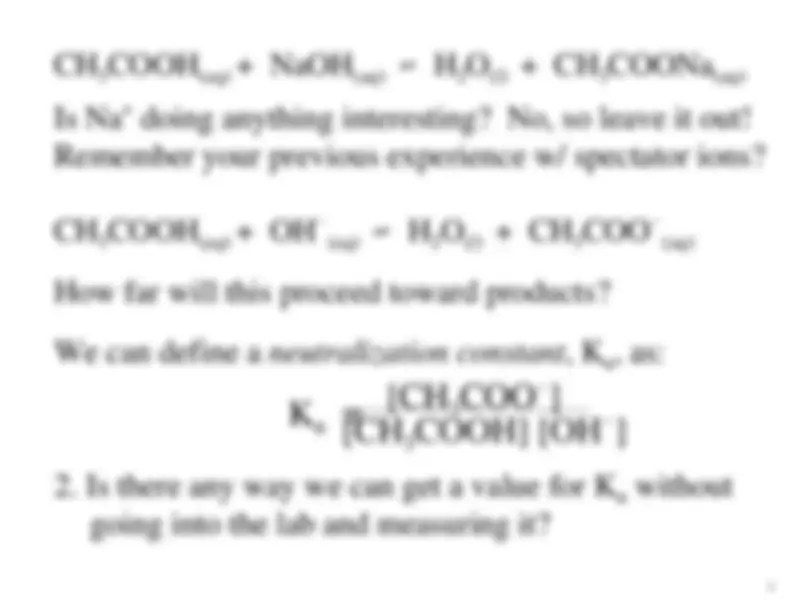
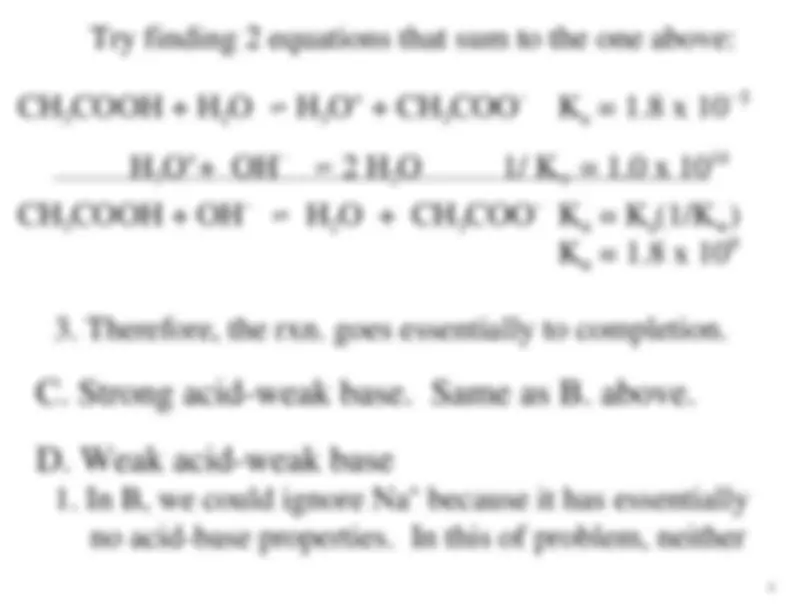
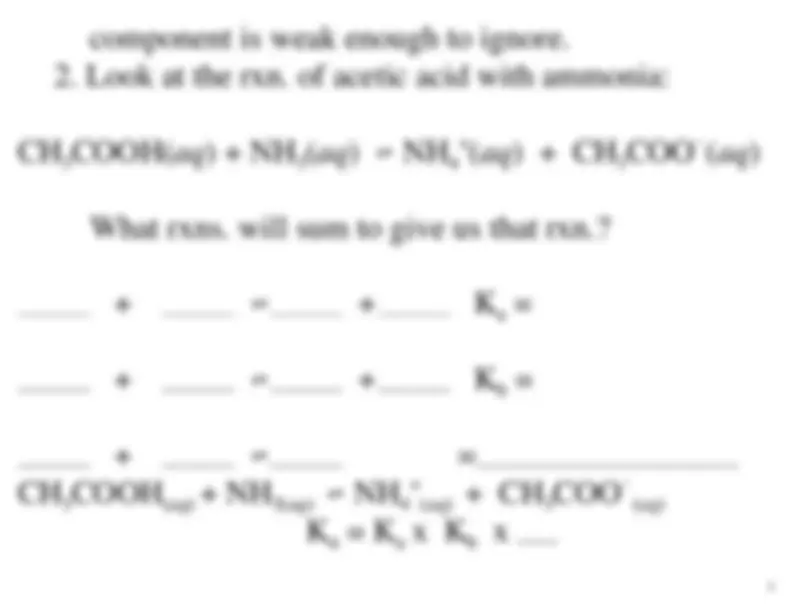
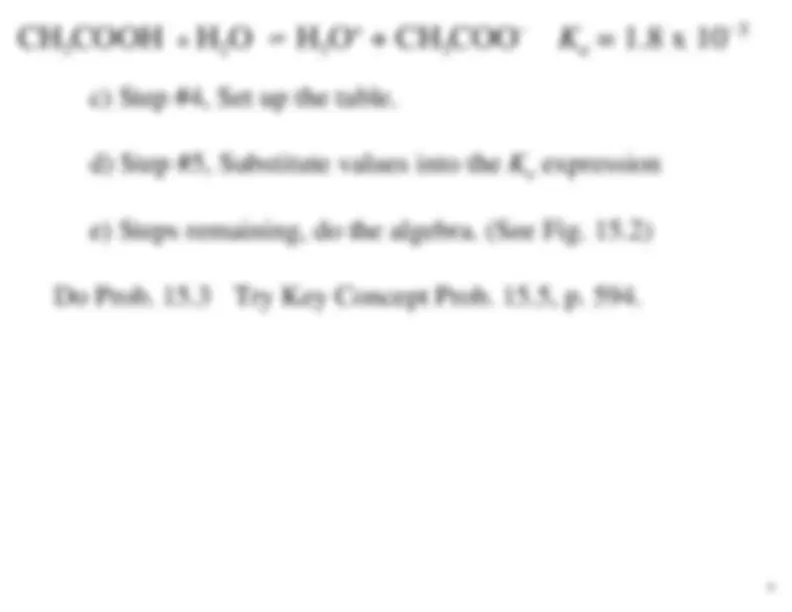
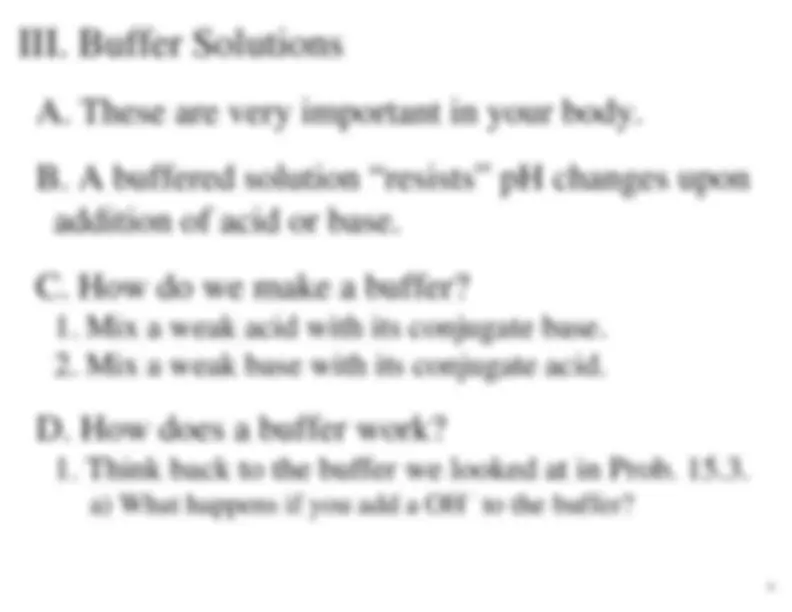
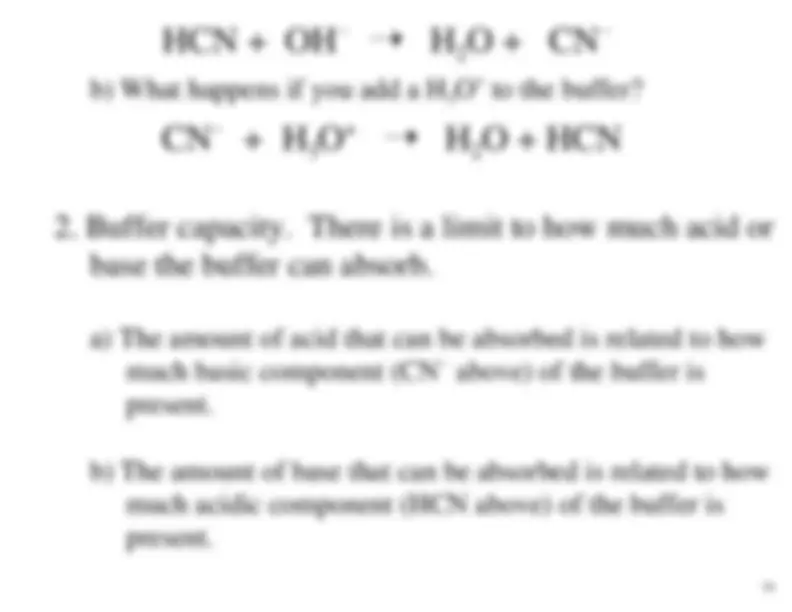
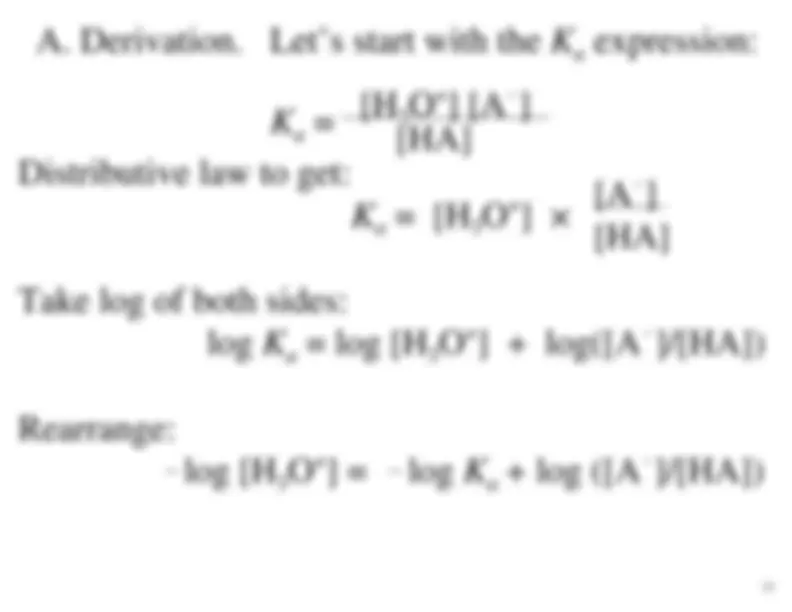
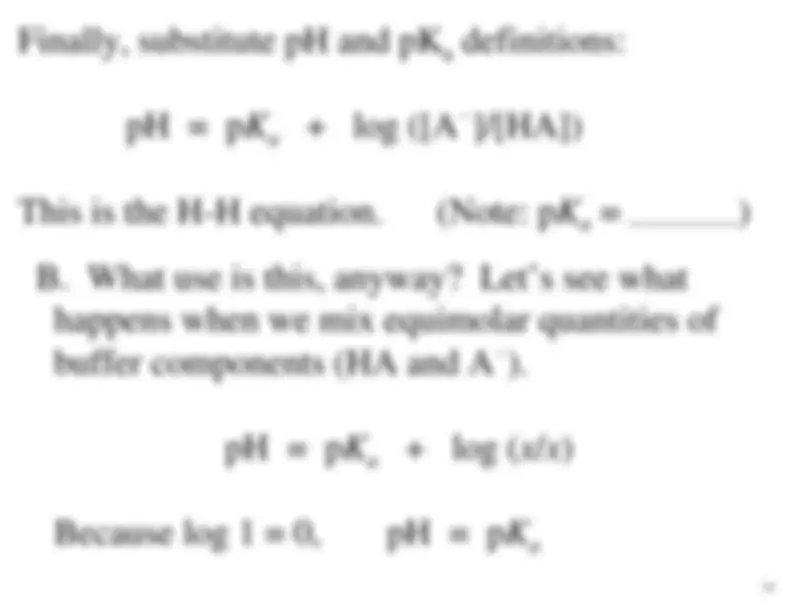
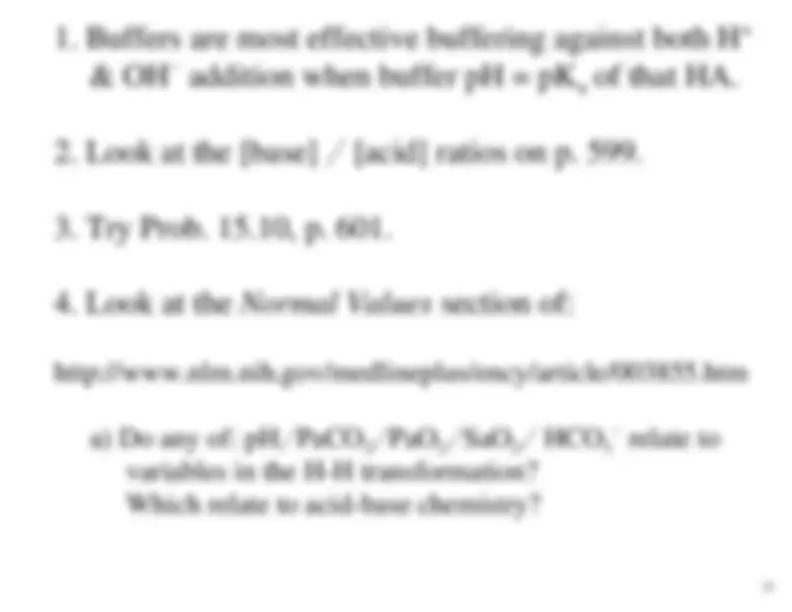
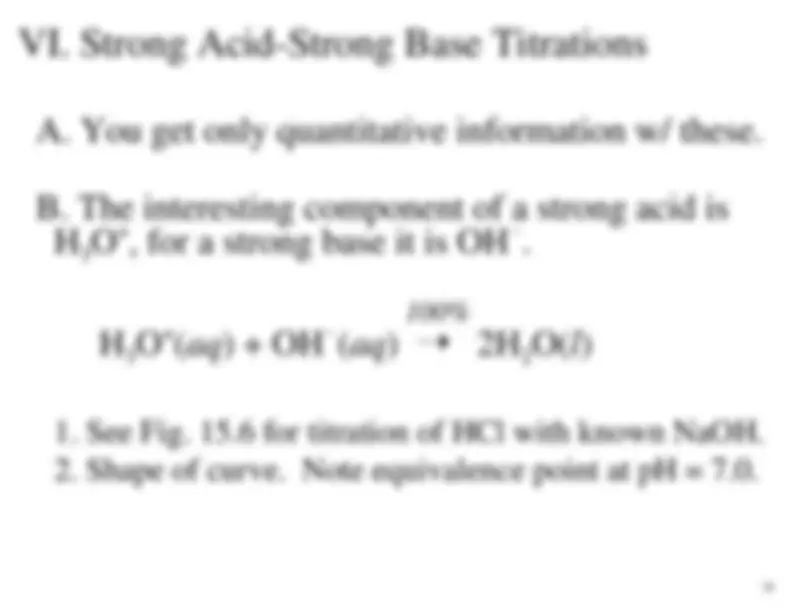
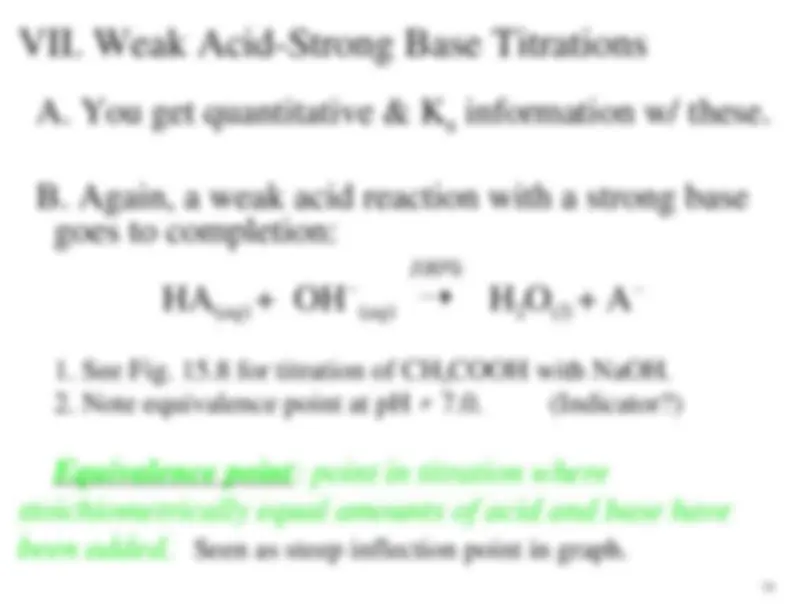
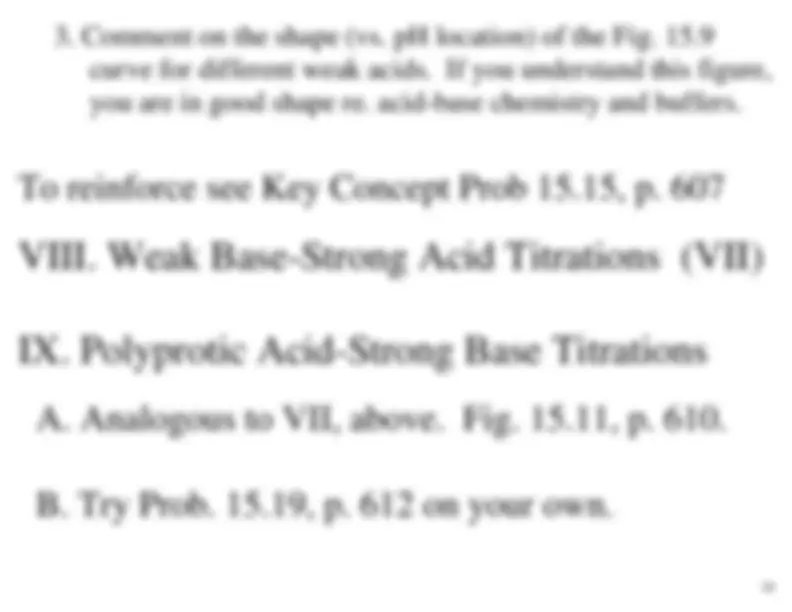
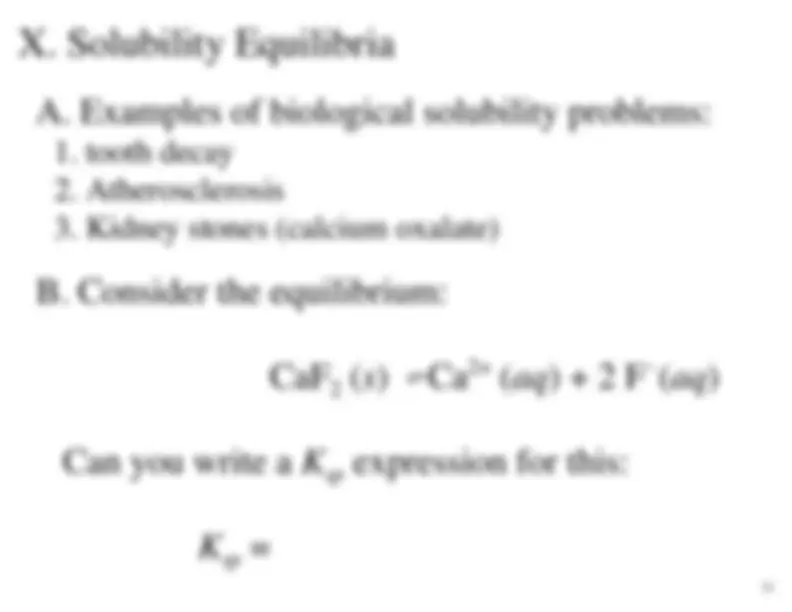
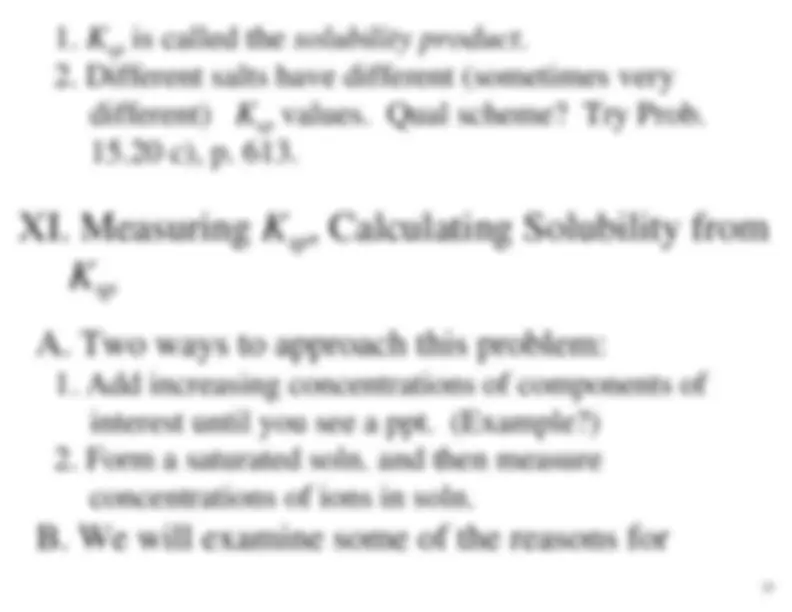
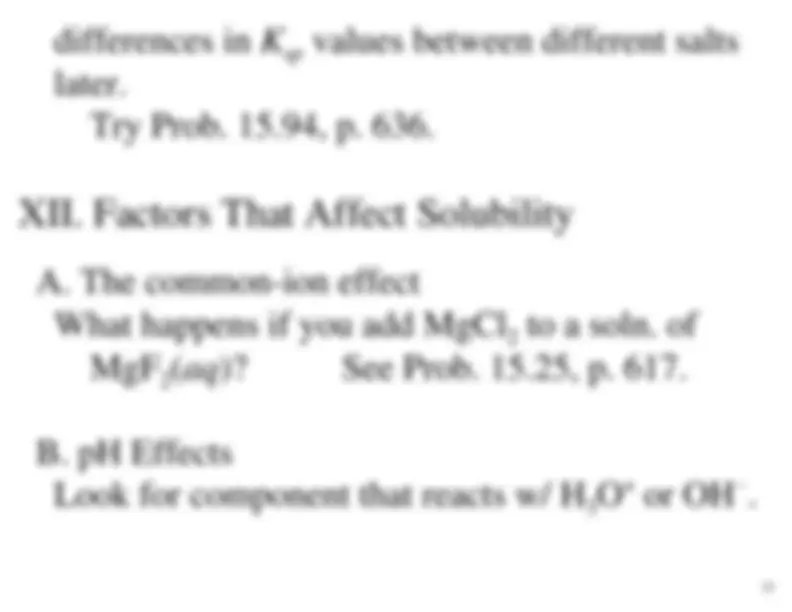
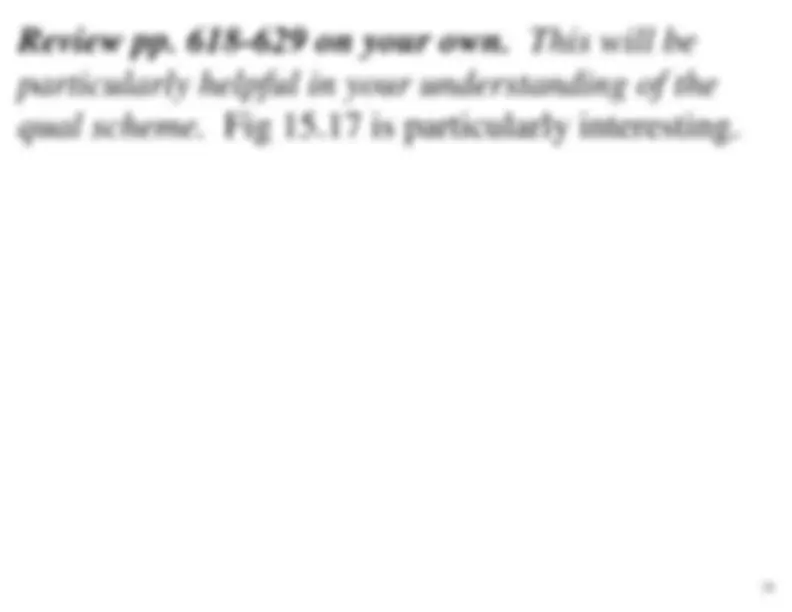
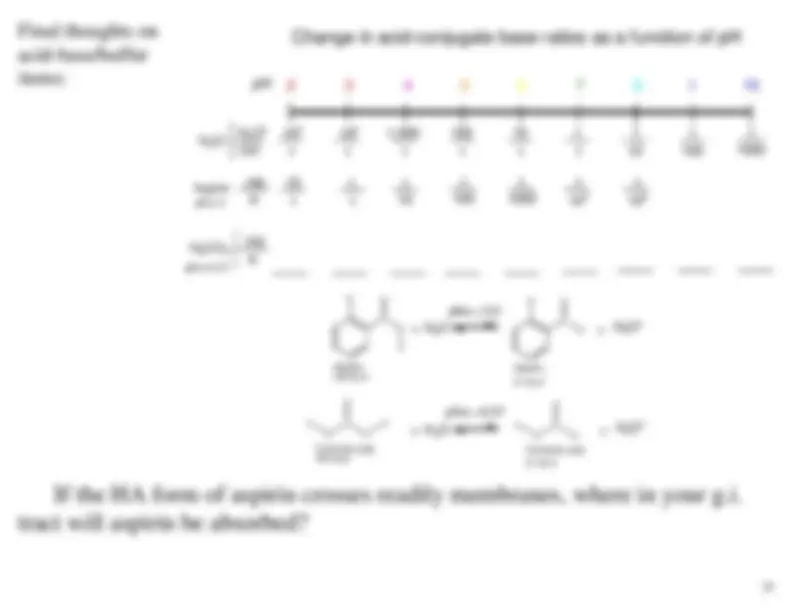
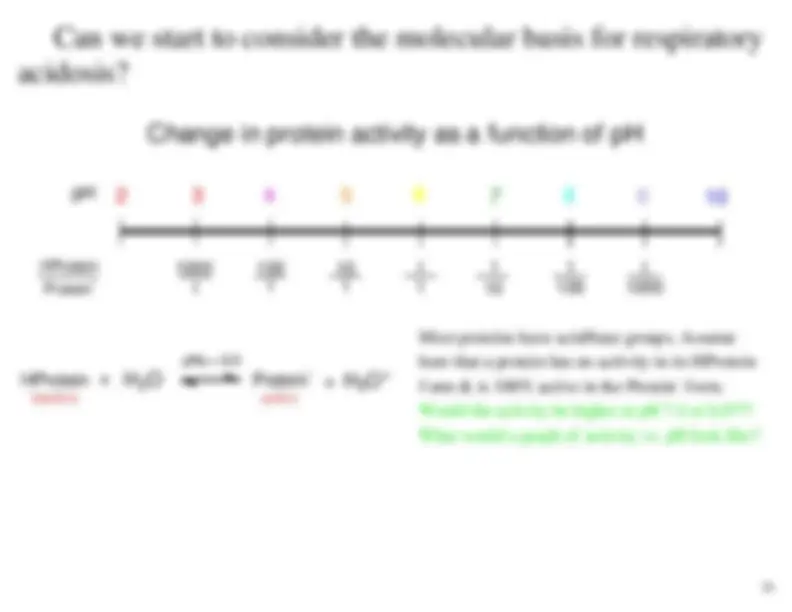
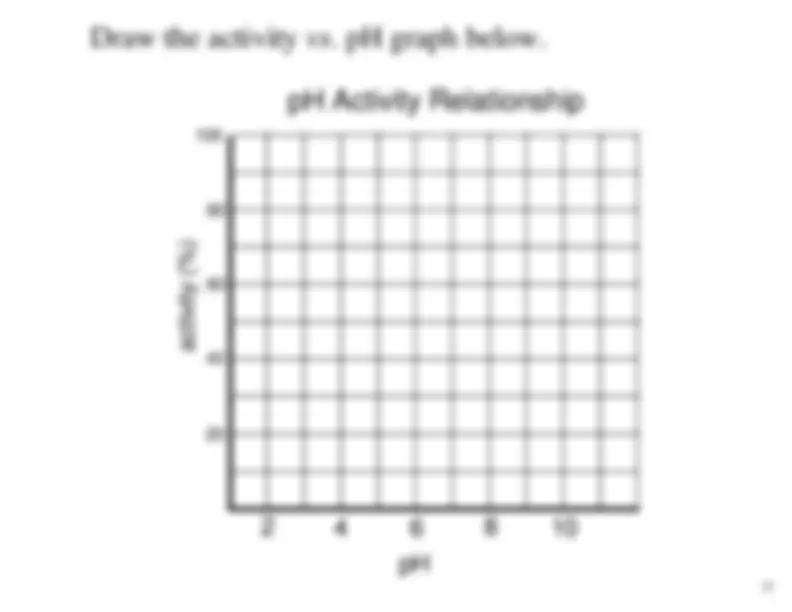


Study with the several resources on Docsity

Earn points by helping other students or get them with a premium plan


Prepare for your exams
Study with the several resources on Docsity

Earn points to download
Earn points by helping other students or get them with a premium plan
Community
Ask the community for help and clear up your study doubts
Discover the best universities in your country according to Docsity users
Free resources
Download our free guides on studying techniques, anxiety management strategies, and thesis advice from Docsity tutors
Some important toics from the course are Kinetics, Equilibrium, Acid-Base Chemistry, Applications of Aqueous Equilibria, hermodynamics, Electrochemistry and Organic Chemistry. Keywords in these lecture slides are: Applications of Aqueous, Hasselbalch Transformation, Solubility Equilibria, Buffers, Titrations, Neutralization Reactions, Strong Acid-Strong Base, Neutralization Constant, Common Ion Effect, Acetic Acid
Typology: Slides
1 / 27

This page cannot be seen from the preview
Don't miss anything!




















HCl(
aq
NaOH(
aq
l ) +
NaCl(
aq
+^
W
present at equilibrium?
Logic?
Try finding 2 equations that sum to the one above:
CH
+^
!^
= 1.8 x 10a^
!^5
!^
w^
= 1.0 x 10
14
!^
!^
n^
(1/Ka
)w
n^ = 1.8 x 10
9
+^
because it has essentially
no acid-base properties. In this of problem, neither
component is weak enough to ignore.
aq
aq
aq
What rxns. will sum to give us that rxn.?
=a^
b^
( aq
3( aq
)^
)^
!^ ( aq
)
n^
x Ka^
b^
x
( aq
! ( aq
( aq
! ( aq
)
Can we calculate [CH
],^
at equilibrium?
([Na
(Fig. 14.7). Main difference: [CH
initial
a) Step #1, Identify reactive (interesting) species: CH
Na
+^
!
acid
inert
acid/base
base
b) Step #2-3, Identify principle reaction:
+^
!^
a^ = 1.8 x 10
!^5
c) Step #4, Set up the table.d) Step #5, Substitute values into the
K
expression a^
e) Steps remaining, do the algebra. (See Fig. 15.2) Do Prob. 15.
Try Key Concept Prob. 15.5, p. 594.
!^
ÿ
!
b) What happens if you add a H
O 3
+^ to the buffer?
!^
+^
ÿ
base the buffer can absorb.a) The amount of acid that can be absorbed is related to how
much basic component (CN
!^ above) of the buffer is
present. b) The amount of base that can be absorbed is related to how
much acidic component (HCN above) of the buffer ispresent.
a^ expression:
a^
a^
a) The [H
O 3
+^ ] (and therefore pH) is determined by the ratio
of acid and conjugate base. b) The pH of effective buffering depends on K
.a
Do Key Concept Prob. 15.6, p. 598.
a^
a^
a^
a^
!
!
a^
a^
a^
a^
a^
a
a^
'
2
2
2
! (^3) b) Is HCO
! 3 acting like an acid or a base?
See pK
valuesa
above, think of CO
leaving the body. 2
a^
a^
100%
( aq
!^ (
aq
)^
ÿ
( l )
!
COOH with NaOH. 3
…
7.0.
(Indicator?)
Equivalence point
: point in titration where
stoichiometrically equal amounts of acid and base havebeen added.
Seen as steep inflection point in graph.
curve for different weak acids. If you understand this figure,you are in good shape re. acid-base chemistry and buffers.